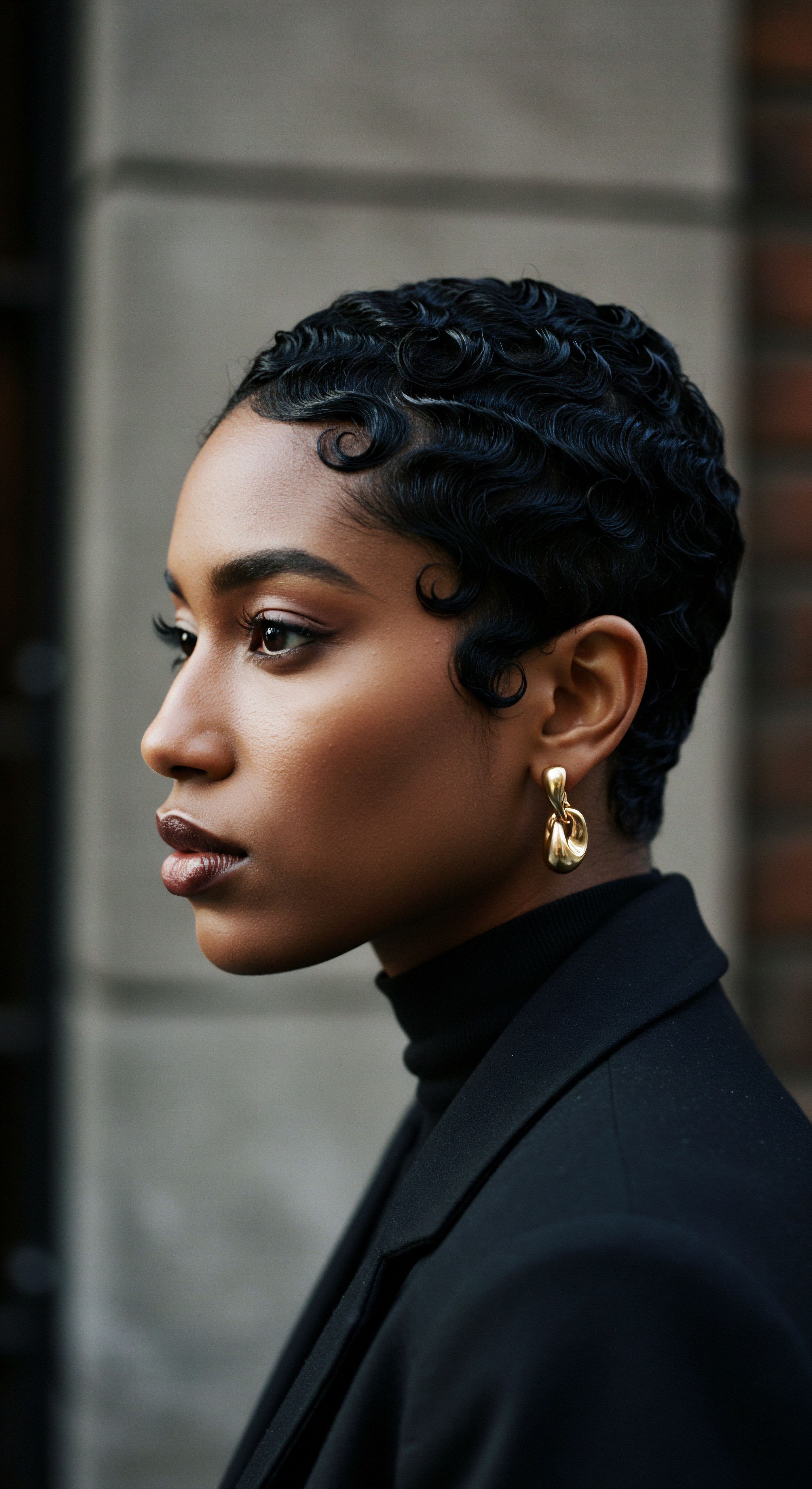
Roots
Have you ever found yourself gazing at a perfectly formed coil, noticing how swiftly its dewy sheen seems to recede, leaving behind a whisper of dryness? That quiet observation, often felt deeply within the textured hair experience, beckons us to consider the very foundational elements of why our beautiful coiled strands possess such a unique relationship with moisture. This deep dive into the microscopic world of hair reveals a story etched in its very structure, a story that explains its remarkable thirst.

The Architectural Uniqueness of Coiled Strands
Each strand of hair, a marvel of biological engineering, is composed primarily of keratin, a protein. However, the manner in which these keratin proteins arrange themselves, and the overall shape of the strand as it emerges from the scalp, dictates much about its interaction with the world around it, especially with water. For coiled hair, this architecture presents a distinct challenge. Unlike straight or wavy hair, which often possesses a more elliptical or circular cross-section, highly coiled strands tend to exhibit an even flatter, ribbon-like or irregular elliptical shape.
This particular geometry means that the cuticle, the outermost protective layer of the hair, does not lie as flat and smoothly along the strand as it might on straighter textures. Instead, the cuticle scales on coiled hair are often more lifted, more prone to slight elevation, particularly at the numerous bends and curves that define its magnificent shape.
The inherent structural characteristics of coiled hair, particularly its unique cross-sectional shape and the arrangement of its cuticle scales, profoundly influence its moisture retention capabilities.
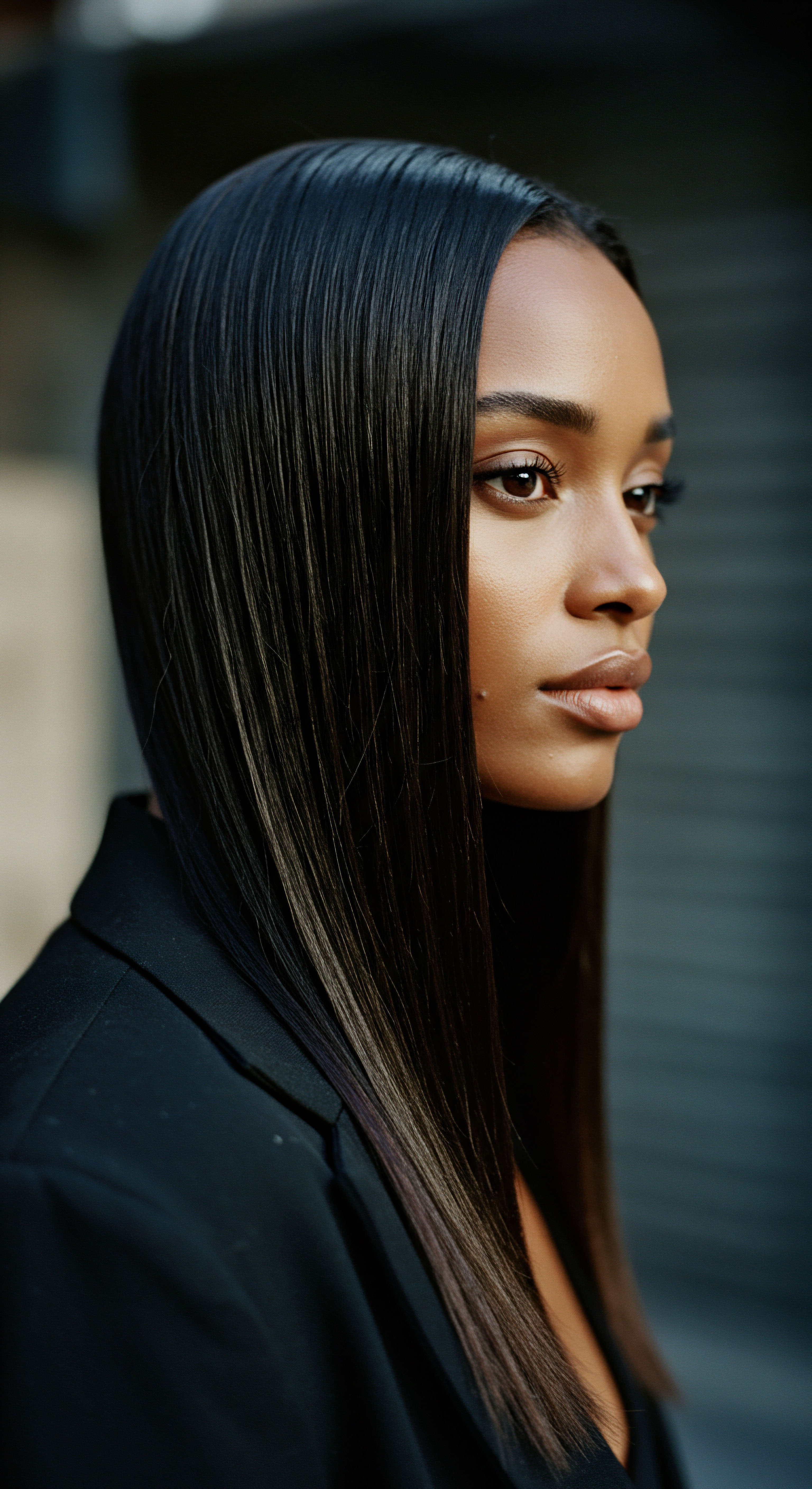
The Cuticle’s Delicate Dance
The cuticle acts as the hair’s primary shield, a protective armor against environmental aggressors and, critically, against moisture loss. When these scales are even slightly raised, they create microscopic gaps, tiny pathways through which water can escape from the hair’s cortex, the inner layer where moisture is held. This structural reality means that coiled hair, by its very nature, is often more permeable than its straighter counterparts.
Think of it like a beautifully tiled roof; if some tiles are slightly ajar, the roof, while still functional, will not repel water with the same efficiency as one where every tile lies perfectly flush. This elevated cuticle state is not a flaw, but a characteristic born of its incredible curl pattern, contributing to its volume and elasticity, yet also to its propensity for dryness.

Surface Area and Evaporation’s Call
Beyond the cuticle’s positioning, another significant factor contributing to rapid moisture dissipation in coiled hair is its vastly increased surface area. Consider a straight line versus a tightly wound spring. The spring, despite occupying a similar linear space, presents far more exposed surface to the environment.
Similarly, a coiled strand, with its intricate twists and turns, offers a much greater total surface area for water molecules to evaporate from compared to a straight strand of equivalent length. This phenomenon, governed by basic principles of physics, means that even when coiled hair is thoroughly hydrated, the sheer expanse of its exposed surface accelerates the rate at which water molecules can escape into the surrounding atmosphere.
A study published in the Journal of Cosmetic Science by Khumalo, G. N. and others (2000) illuminated the unique morphological features of African hair, including its highly coiled nature and distinct cuticle characteristics, which contribute to its mechanical properties and susceptibility to damage, often linked to moisture dynamics.
- Cuticle Integrity ❉ The outermost layer of hair, the cuticle, acts as a barrier, and its optimal condition is central to retaining internal moisture.
- Coil Geometry ❉ The specific shape and numerous bends of coiled hair influence how light reflects, how products distribute, and how moisture interacts with the strand.
- Porosity Levels ❉ Hair’s ability to absorb and hold water, known as porosity, is often higher in coiled textures due to cuticle lift, leading to faster moisture loss.
| Hair Type Straight |
| Typical Cross-Section Circular |
| Cuticle Lay Flat, Smooth |
| Surface Area for Evaporation Least |
| Hair Type Wavy |
| Typical Cross-Section Oval |
| Cuticle Lay Mostly Flat |
| Surface Area for Evaporation Moderate |
| Hair Type Curly |
| Typical Cross-Section Elliptical |
| Cuticle Lay Slightly Lifted |
| Surface Area for Evaporation Significant |
| Hair Type Coiled |
| Typical Cross-Section Flat Elliptical, Ribbon-like |
| Cuticle Lay Often Lifted, Irregular |
| Surface Area for Evaporation Most |
| Hair Type The structural differences across hair types directly impact their inherent moisture retention. |

The Hydrophobic Lipid Layer
Beneath the cuticle, a delicate, naturally occurring lipid layer coats the hair strand. This layer, composed of fatty acids like 18-methyl eicosanoic acid (18-MEA), plays a critical role in providing a hydrophobic, or water-repelling, surface to the hair. It acts as an additional seal, helping to keep moisture within the cortex and prevent water from penetrating too deeply, which can lead to swelling and cuticle damage. In coiled hair, however, this lipid layer can be less continuous or more easily disrupted due to the many turns and twists, and the frequent manipulation often required for care and styling.
Each bend is a point of potential vulnerability, where the protective coating might be thinner or more prone to abrasion, thereby compromising its ability to seal in moisture effectively. This microscopic unevenness, while subtle, contributes to the overall narrative of rapid moisture escape.
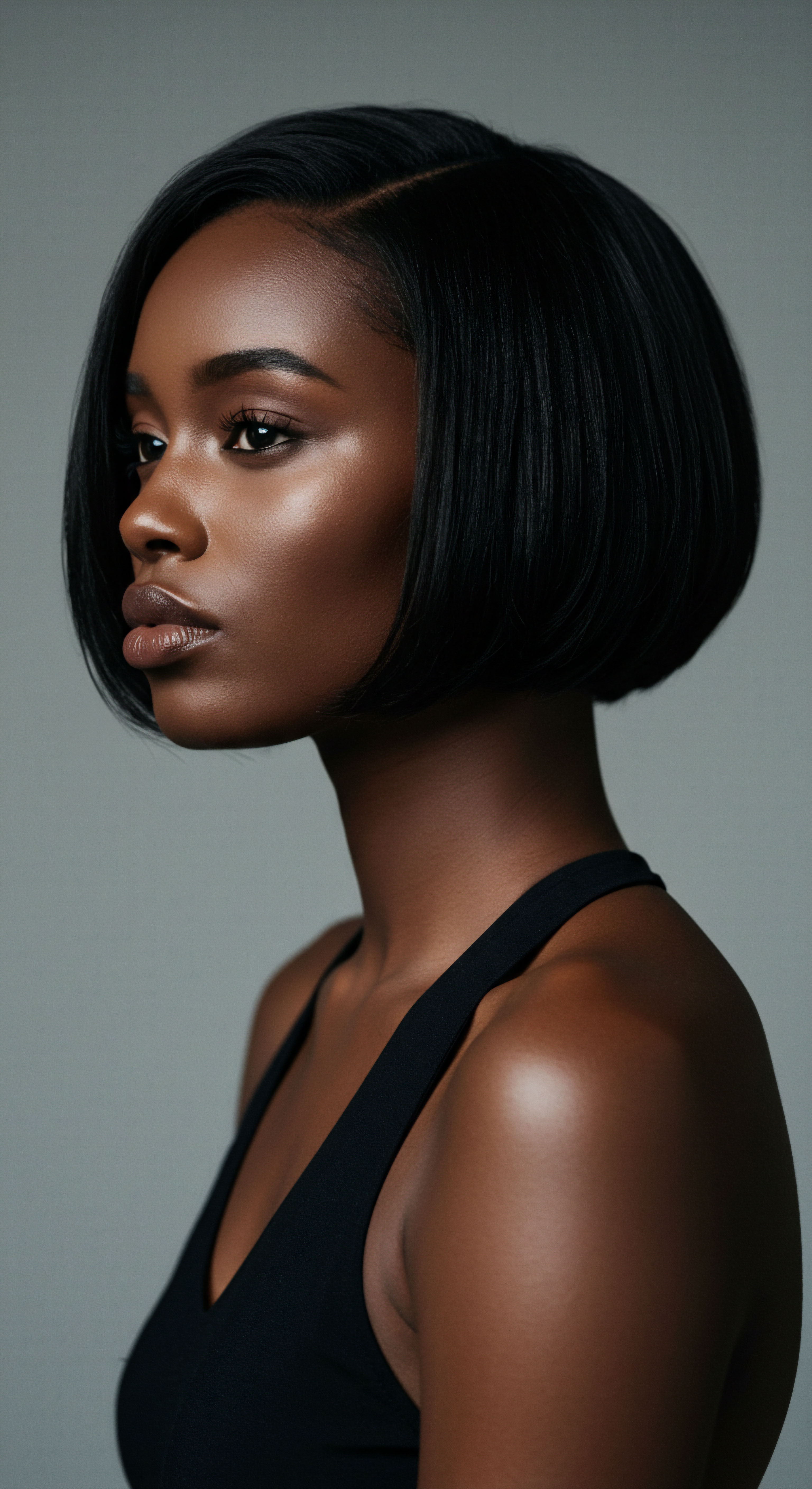
Ritual
Stepping from the foundational understanding of hair’s very structure, we now turn our attention to the daily and weekly rhythms that shape our coiled strands. The practices we adopt, the products we choose, and the very hands that tend to our hair all play a significant part in its moisture narrative. This section explores how our care rituals, even those intended for good, can inadvertently influence the delicate balance of hydration within coiled hair.
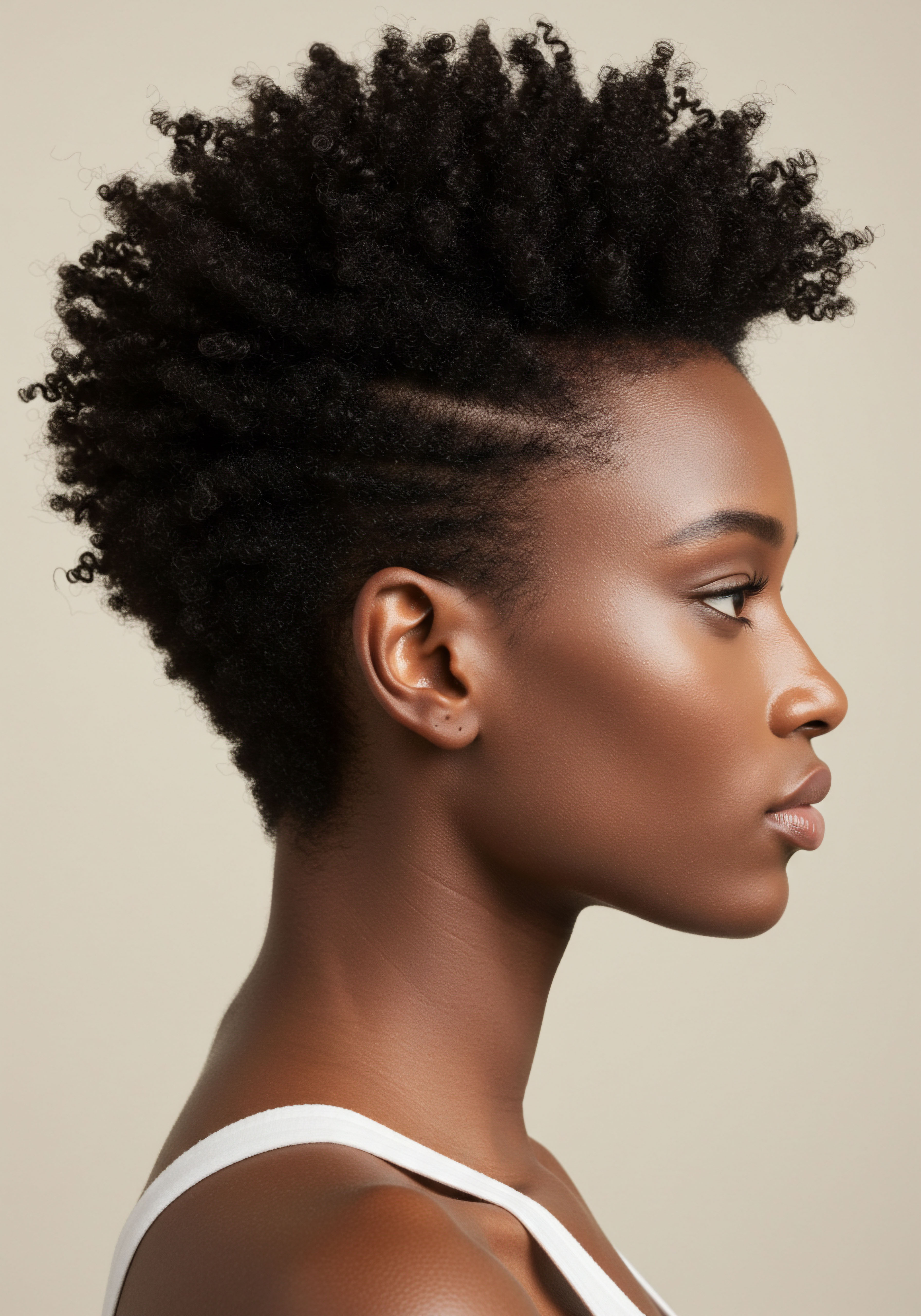
Cleansing’s Double-Edged Nature
The act of cleansing, while essential for removing buildup and maintaining scalp health, can strip hair of its natural oils and moisture if not approached with thoughtful consideration. Many conventional shampoos contain harsh sulfates, detergents designed to create a rich lather and deeply cleanse. While effective at removing impurities, these agents are often indiscriminate, washing away the protective sebum produced by the scalp and the precious lipid layers on the hair shaft itself.
For coiled hair, already predisposed to dryness due to its structural attributes, this stripping effect can be particularly detrimental, leaving strands vulnerable and thirsty. The key lies in selecting gentle, sulfate-free cleansers that purify without excessively dehydrating, allowing the hair’s natural moisture to remain.
Mindful cleansing, opting for gentle formulations over harsh detergents, forms a crucial foundation for preserving moisture in coiled hair.

How Does Product Selection Influence Moisture Retention?
The vast array of hair products available can be both a blessing and a challenge. Understanding how different ingredients interact with coiled hair is paramount. Products rich in humectants, such as glycerin or hyaluronic acid, draw moisture from the air into the hair. While beneficial in humid climates, in drier environments, these same ingredients can draw moisture out of the hair, leading to increased dryness.
This seemingly counterintuitive effect underscores the importance of environmental awareness in product selection. Furthermore, many styling products designed for hold or definition can contain alcohols or other drying agents that, over time, contribute to moisture depletion. A careful examination of ingredient lists, favoring emollients and occlusives, becomes a significant part of the moisture retention ritual.
- Conditioning Deeply ❉ Regular use of deep conditioners and leave-in treatments helps replenish moisture and seal the cuticle, providing a sustained shield against dryness.
- Sealing Methods ❉ Employing the “LOC” (Liquid, Oil, Cream) or “LCO” (Liquid, Cream, Oil) method can layer moisture and sealants effectively, trapping hydration within the strand.
- Gentle Detangling ❉ Coiled hair’s delicate nature requires patience and appropriate tools during detangling to minimize breakage and cuticle damage, which can lead to moisture loss.

The Role of Styling Techniques and Tools
The very techniques we employ to define and style coiled hair can inadvertently contribute to moisture loss. Frequent manipulation, vigorous brushing, or styling with tools that generate high heat can all compromise the cuticle’s integrity. Each brush stroke, especially on dry hair, can lift cuticle scales, creating those tiny openings for moisture escape.
Similarly, excessive heat styling, even with protective products, can denature hair proteins and damage the lipid layer, severely diminishing the hair’s ability to hold onto water. The goal in styling should be to minimize friction and heat exposure, allowing the hair to dry naturally or with very low heat, and to handle it with the utmost gentleness.
Consider the impact of constant friction. Even seemingly innocuous habits, such as leaning against certain fabrics or the repeated motion of hair rubbing against clothing, can create micro-abrasions on the cuticle. These small, cumulative damages contribute to a less effective moisture barrier over time. Opting for smooth fabrics for pillowcases, like satin or silk, and using satin-lined accessories can significantly reduce this frictional damage, preserving the hair’s external integrity.
| Ingredient Category Humectants (e.g. Glycerin, Hyaluronic Acid) |
| Function Draws water from air |
| Benefit for Coiled Hair Adds moisture, plumps strands |
| Consideration Can dehydrate in low humidity |
| Ingredient Category Emollients (e.g. Shea Butter, Jojoba Oil) |
| Function Softens, smooths hair |
| Benefit for Coiled Hair Conditions, reduces friction |
| Consideration Can cause buildup if overused |
| Ingredient Category Occlusives (e.g. Petroleum Jelly, Mineral Oil) |
| Function Forms a physical barrier |
| Benefit for Coiled Hair Seals in moisture, reduces evaporation |
| Consideration Can feel heavy, requires thorough cleansing |
| Ingredient Category Proteins (e.g. Hydrolyzed Wheat Protein) |
| Function Strengthens hair bonds |
| Benefit for Coiled Hair Reduces breakage, improves elasticity |
| Consideration Can cause stiffness if overused |
| Ingredient Category A balanced approach to product ingredients supports optimal moisture balance. |

Relay
Having explored the inherent architecture of coiled hair and the practices that shape its daily life, we now turn to the broader canvas upon which its moisture story unfolds. This section invites a deeper contemplation of the forces beyond immediate control – the subtle interplay of environmental conditions, the genetic blueprints passed down through generations, and the often-unseen influence of historical and cultural narratives. It is within this intricate web that the full complexity of coiled hair’s relationship with moisture truly reveals itself.
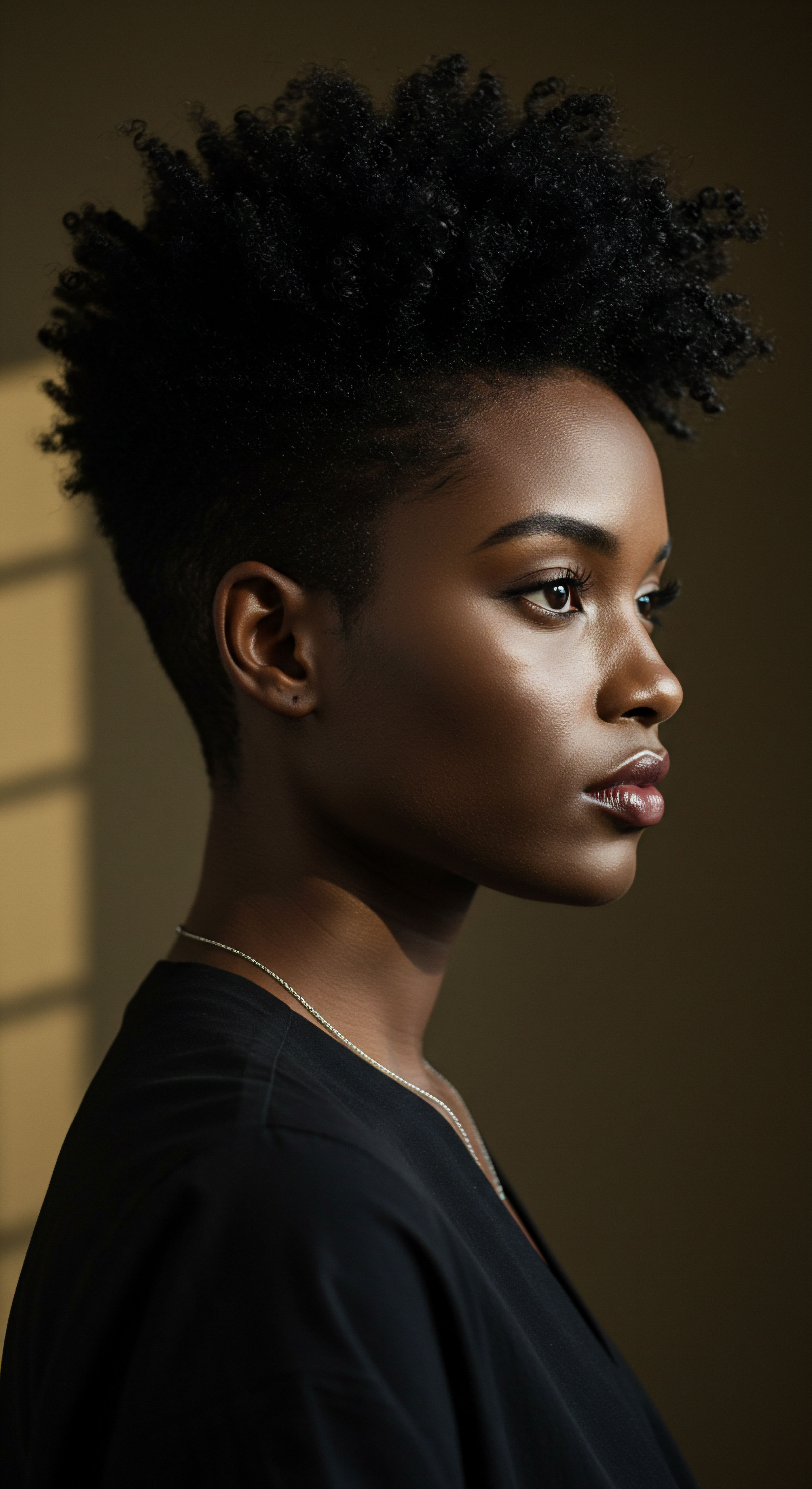
Environmental Climate’s Unseen Hand
The very air around us acts as a constant, invisible force influencing hair’s hydration. In environments with low humidity, the air itself is parched, eager to draw moisture from any available source, including our hair. This phenomenon, known as osmosis, dictates that water will move from an area of higher concentration (inside the hair strand) to an area of lower concentration (the dry air). For coiled hair, with its already compromised cuticle and extensive surface area, this environmental pull is particularly potent.
Conversely, in highly humid climates, hair might readily absorb atmospheric moisture, potentially leading to hygral fatigue – a cycle of swelling and shrinking that can weaken the hair shaft over time, further compromising its ability to retain moisture effectively. Understanding one’s climate is not merely an interesting fact; it is a critical piece of the moisture retention puzzle.
Environmental humidity plays a significant, often overlooked, role in how coiled hair maintains its moisture, necessitating adaptive care strategies.
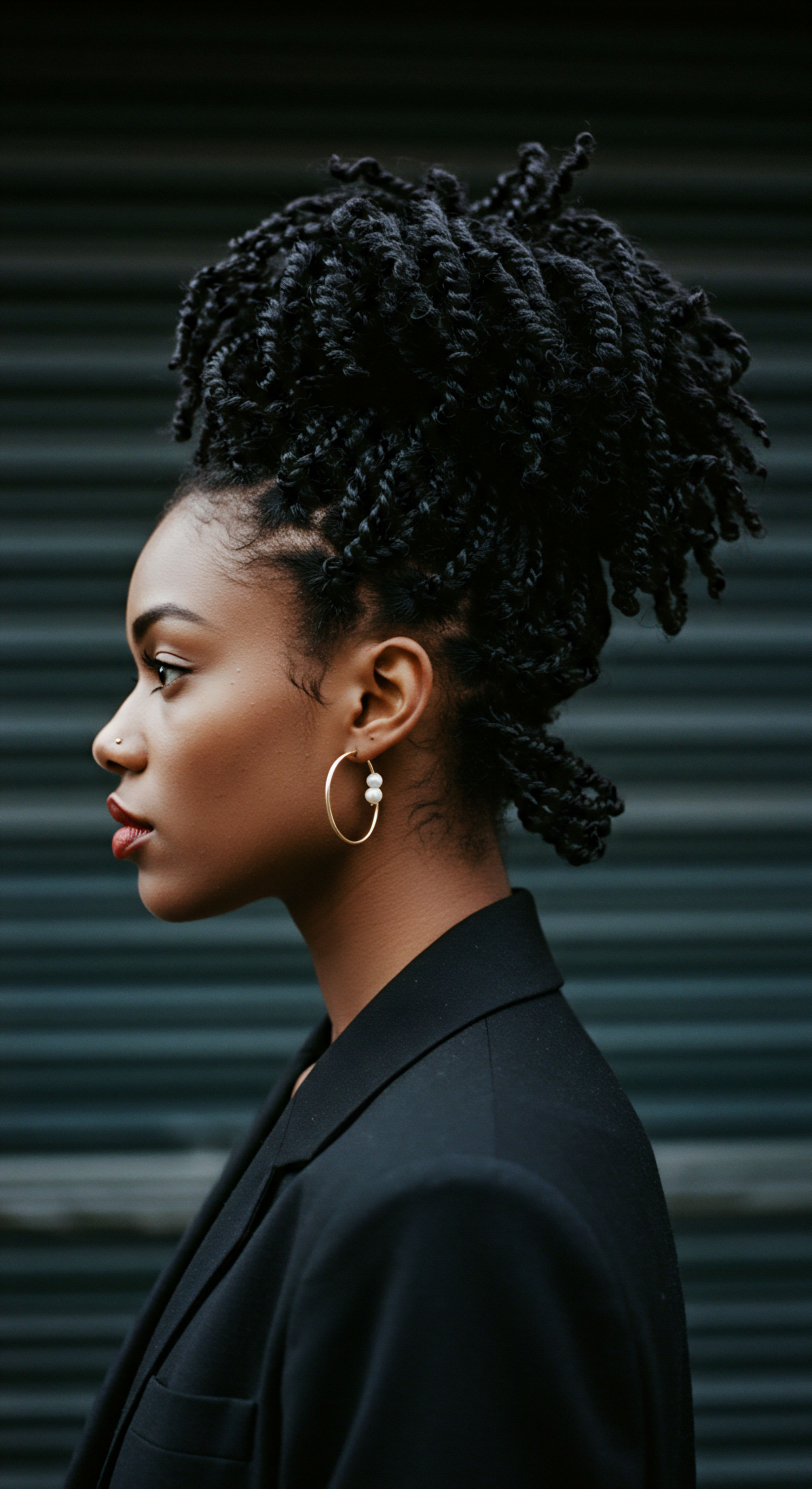
How Do Genetic Factors Influence Hair Hydration?
Beyond the visible curl pattern, our genetic heritage also contributes to the microscopic composition and growth patterns of our hair. While research into the specific genetic markers for hair moisture retention is ongoing, it is understood that the distribution and activity of sebaceous glands, which produce natural scalp oils, can be genetically influenced. Individuals with naturally less active sebaceous glands may produce less sebum, a natural conditioner and sealant for the hair.
Coiled hair, due to its spiral path, also makes it more challenging for sebum to travel down the hair shaft, leaving the ends particularly vulnerable to dryness. This inherent biological predisposition, rooted in our ancestral lineage, forms another layer in the narrative of moisture dynamics.
A comprehensive review by Franbourg, A. Hallegot, P. Baltenneck, F. Toutain, C.
& Leroy, F. (2003) on the diversity of human hair highlighted variations in hair fiber properties across different ethnic groups, noting distinct structural and compositional differences that influence characteristics such as tensile strength, elasticity, and water absorption.

The Intergenerational Wisdom of Hair Care
Throughout history, and across diverse cultures, practices for tending to coiled hair have evolved, often out of necessity and observation. These intergenerational rituals, passed down through families and communities, frequently contain deep wisdom about moisture preservation, even if the underlying science was not explicitly understood. The use of natural oils, butters, and specific styling techniques like braiding or twisting, all served to protect the hair from environmental elements and to seal in precious hydration. These practices, honed over centuries, stand as a testament to an intuitive understanding of coiled hair’s needs, offering a valuable counterpoint to modern product-driven solutions.
Consider the cultural significance of hair oiling traditions prevalent in many African and diasporic communities. These practices, often performed as communal rituals, involve applying various natural oils to the scalp and strands. While the social bonding aspect is clear, the practical benefit lies in the oils’ occlusive properties, forming a barrier that slows moisture evaporation. This cultural heritage offers profound lessons in preventative moisture care, reminding us that knowledge often resides not just in scientific laboratories, but in the sustained wisdom of lived experience.
| Humidity Level Low Humidity (Dry Air) |
| Effect on Hair Hair loses moisture to air |
| Coiled Hair Response Rapid dehydration, increased frizz |
| Recommended Approach Focus on occlusives, deep conditioning, leave-ins |
| Humidity Level Moderate Humidity |
| Effect on Hair Balanced moisture exchange |
| Coiled Hair Response Optimal definition, less frizz |
| Recommended Approach Balanced regimen, humectants with sealants |
| Humidity Level High Humidity (Humid Air) |
| Effect on Hair Hair absorbs excess moisture |
| Coiled Hair Response Swelling, potential hygral fatigue, frizz |
| Recommended Approach Protein treatments, anti-humectants, protective styles |
| Humidity Level Adapting hair care to local climate conditions is vital for moisture balance. |

The Lipid Barrier’s Unseen Vulnerability
Beyond the physical structure, the very chemical composition of coiled hair can influence its moisture dynamics. The lipid barrier, primarily composed of ceramides and 18-methyl eicosanoic acid (18-MEA), acts as a natural waterproofing agent. This layer is crucial for maintaining the hair’s hydrophobic nature, allowing it to repel water and retain its internal hydration. Research suggests that coiled hair may have a lower concentration of 18-MEA or a more disrupted lipid layer compared to straight hair.
This difference in lipid content can lead to increased water uptake and, subsequently, faster water loss. The disruption can be exacerbated by chemical treatments, heat styling, and even mechanical manipulation. Therefore, nourishing this delicate lipid barrier through the use of lipid-rich conditioners and oils becomes a critical aspect of supporting coiled hair’s intrinsic moisture retention capabilities.

Reflection
The journey into understanding why coiled hair strands lose moisture quickly unveils a story of remarkable complexity and resilience. It is a story told not only in the intricate helix of keratin and the delicate dance of cuticle scales, but also in the whispering winds of diverse climates and the gentle wisdom passed through generations. Our coiled hair, with its inherent thirst, invites us to move beyond superficial solutions, encouraging a deeper connection to its unique needs. This connection fosters not just healthier strands, but a profound appreciation for the beauty of its natural form, a testament to its enduring strength and spirit.

References
- Khumalo, G. N. et al. “The Morphology and Mechanical Properties of African Hair.” Journal of Cosmetic Science, vol. 51, no. 5, 2000, pp. 297-308.
- Franbourg, A. et al. “Diversity of Human Hair ❉ Ancestral Origin and Structural Variation.” Hair Science and Related Topics, edited by K. Toda, et al. Springer, 2003, pp. 1-17.
- Robbins, C. R. Chemical and Physical Behavior of Human Hair. 5th ed. Springer, 2012.
- Wolfram, L. J. “Hair ❉ The Physical Properties of Hair.” Hair ❉ Chemistry and Biochemistry, edited by C. E. Orfanos and R. Happle, Springer, 1990, pp. 13-40.
- Porter, R. and Rivers, R. “The Hair Follicle.” The Biology of the Skin, edited by R. Marks and L. A. Baden, Cambridge University Press, 1999, pp. 157-175.
- Bouillon, C. and Wilkinson, J. B. The Science of Hair Care. CRC Press, 2005.